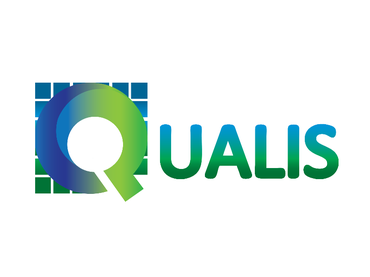Public Policy Observatory
Discussions on Access and Retention in Basic Education in the Northwestern São Paulo Region
Visualizações: 364Keywords:
region of Noroeste Paulistano, education, public policies, inequalitiesAbstract
The research report depicts part of the structural conditions that permeate public education in the Northwestern São Paulo region, which influence students' access to and retention in schools. As part of a larger project involving the creation of a Public Policy Observatory for the region, this initial mapping sought to outline socioeconomic structural determinants and markers to support the debate on educational public policies, aligned with Sustainable Development Goal (SDG) number 4 of the 2030 Agenda (Quality Education) and the National Education Plan (PNE, BRAZIL, 2014). The methodology used was based on collecting official data through transparency platforms, institutional websites, media-reported data, and conversations with school administrators. The picture drawn of the Northwestern São Paulo region reveals two clear trends: the region's heterogeneity in terms of access to public policies and rights, and the historical precariousness of the "periphery of the periphery," large areas that have historically experienced deficits in access to rights, including education. We believe these asymmetries found in the Northwestern São Paulo region should be considered when implementing educational public policies.
Downloads
References
BRASIL. Lei 13.005, de 25 de junho de 2014. Aprova o Plano Nacional de Educação – PNE e dá outras providências. Brasília: Presidência da República, 2014. Disponível em http://www.planalto.gov.br/ccivil_03/_ato2011-2014/2014/lei/l13005.htm . Acesso em 18/01/2019.
CENTRO DE REFERÊNCIAS EM EDUCAÇÃO EM TEMPO INTEGRAL. Educação em Tempo Integral. São Paulo: Cidade Escola Aprendiz, 2014. Disponível em: https://educacaointegral.org.br/glossario/educacao-em-tempo-integral/ . Acesso em 01/07/2020.
INEP. O que são as metas de qualidade educacional. Brasília: MEC, s/d. Disponível em: http://portal.inep.gov.br/educacao-basica/ideb/metas . Acessado em 12/11/2019.
INSTITUTO SOU DA PAZ. Sou da Paz analisa estatísticas criminais do Estado de São Paulo. Panorama 2018. Disponível em: www.soudapaz.org. Acesso em 04/12/2019.
MEC - MINISTÉRIO DA EDUCAÇÃO. CONSELHO NACIONAL DE EDUCAÇÃO. CÂMARA DE EDUCAÇÃO BÁSICA. RESOLUÇÃO Nº 7, DE 14 DE DEZEMBRO DE 2010. Fixa Diretrizes Curriculares Nacionais para o Ensino Fundamental de 9 (nove) anos. Brasília, 2010.
NERY, Marcelo; SOUZA, Altay; ADORNO, Sérgio. Os padrões urbano-demográficos da capital paulista. In: ESTUDOS AVANÇADOS, v. 33, n.97, 2019.
OSTLER, Denise de Almeida. ESCOLA E PROGRAMA NA EDUCAÇÃO INTEGRAL: AbORDAGENS E SINGULARIDADES. São Paulo: Cadernos de Educação, v. 16, n. 33, jul.- dez. 2017. Disponível em https://www.metodista.br/revistas/revistasims /index.php/ cadernosdeeducacao /article/viewFile/8450/6019 . Acesso em 01/07/2020.
REDE NOSSA SÃO PAULO. Mapa da Desigualdade 2018. Disponível em: www.redesocialdecidades.org.br/br/SP/sao-paulo . Acesso em 04/12/2019.
SEE. Secretaria de Estado da Educação. Governo do Estado de São Paulo. Saresp 2011. Participe! São Paulo, 29/11/2011. Disponível em:
https://www.educacao.sp.gov.br/noticia/podcast/saresp-2011-participe/ . Acesso em 10/11/2019.
SEE. Secretaria de Estado da Educação. Governo do Estado de São Paulo. Programa de Qualidade da Escola. Nota Técnica. São Paulo, 2019a. Disponível em http://idesp.edunet.sp.gov.br/Arquivos/Nota%20tecnica_2018.pdf , acesso em 12/11/2019.
SEE. Secretaria de Estado da Educação. Governo do Estado de São Paulo. Dados abertos da Educação. São Paulo, 2019b. Disponível em
https://dados.educacao.sp.gov.br/dataset/%C3%ADndice-de-desenvolvimento-daeduca%C3%A7%C3%A3o-do-estado-de-s%C3%A3o-paulo-idesp-por-escola , acesso em 10/12/2019.
SEE. Secretaria de Estado da Educação. Governo do Estado de São Paulo. IDESP. São Paulo, s/d. Disponível em https://www.educacao.sp.gov.br/idesp , acesso em 12/11/2019.
SEE. Secretaria de Estado da Educação. Governo do Estado de São Paulo. Escola de Tempo Integral. São Paulo, s/da. Disponível em: https://www.educacao.sp.gov.br/escola-tempointegral . Acesso em 01/07/2020.
SEE-RS. Secretaria de Estado da Educação. Governo do Rio Grande do Sul. Reformas em escolas: investimentos na Wolmar Salton totalizam R$ 920 mil. Porto Alegre: SEE-RS, 2017. Disponível em https://educacao.rs.gov.br/reformas-em-escolas-investimentos-na-wolmarsalton-totalizam-r-920-mil . Acesso em 01/07/2020.
SME. Secretaria Municipal de Educação. Prefeitura da Cidade de São Paulo. IDEP – Índice de Desenvolvimento da Educação Paulistana. São Paulo, 2019. Disponível em: https://educacao.sme.prefeitura.sp.gov.br/indice-de-desenvolvimento-da-educacao-paulistanaidep/ , acesso em 20/11/2019.
SOUZA, Ludmilla. Educação integral é meta do Plano Nacional de Educação. Brasília: Agência Brasil, 2019. Disponível em: https://agenciabrasil.ebc.com.br/educacao/noticia/2019-08/educacao-integral-e-meta-do-plano-nacional-de-educacao . Acesso em 01/07/2020.
TODOS PELA EDUCAÇÃO. Observatório do PNE. 2018. Disponível em https://www.observatoriodopne.org.br/ . Acesso em 01/07/2020.
Downloads
Published
How to Cite
Issue
Section
License
Copyright (c) 2021 Revista de Estudos Interdisciplinares

This work is licensed under a Creative Commons Attribution 4.0 International License.
The Journal of Interdisciplinary Studies adopts the Creative Commons Attribution 4.0 International License (CC BY 4.0), which allows for sharing and adapting the work, including for commercial purposes, provided proper attribution is given and the original publication in this journal is acknowledged.













